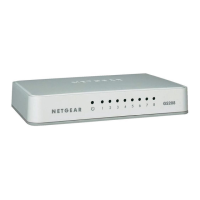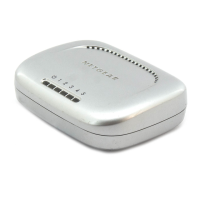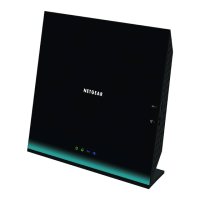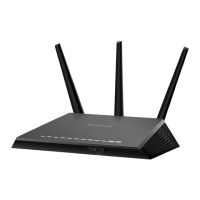ProSafe Gigabit 8 Port VPN Firewall FVS318G Reference Manual
Router and Network Management 7-7
1.1 November, 2009
Port Triggering
Port triggering allows some applications to function correctly that would otherwise be partially
blocked by the firewall. Using this feature requires that you know the port numbers used by the
application.
Once configured, port triggering operates as follows:
• A PC makes an outgoing connection using a port number defined in the Port Triggering table.
• This VPN firewall records this connection, opens the additional INCOMING port or ports
associated with this entry in the Port Triggering table, and associates them with the PC.
• The remote system receives the PCs request and responds using the different port numbers that
you have now opened.
• This VPN firewall matches the response to the previous request and forwards the response to
the PC. Without port triggering, this response would be treated as a new connection request
rather than a response. As such, it would be handled in accordance with the Port Forwarding
rules.
– Only one PC can use a port triggering application at any time.
– After a PC has finished using a port triggering application, there is a time-out period
before the application can be used by another PC. This is required because the firewall
cannot be sure when the application has terminated.
See “Configuring Port Triggering” on page 4-27 for the procedure on how to use this feature.
VPN Tunnels
The VPN firewall router permits up to 25 IPsec VPN tunnels and 10 SSL VPN tunnels at a time.
Each tunnel requires extensive processing for encryption and authentication.
See Chapter 5, “Virtual Private Networking Using IPsec” for the procedure on how to use IPsec
VPN.
Using QoS to Shift the Traffic Mix
The QoS priority settings determine the priority and, in turn, the quality of service for the traffic
passing through the firewall. The QoS is set individually for each service.
• You can accept the default priority defined by the service itself by not changing its QoS
setting.
• You can change the priority to a higher or lower value than its default setting to give the
service higher or lower priority than it otherwise would have.

